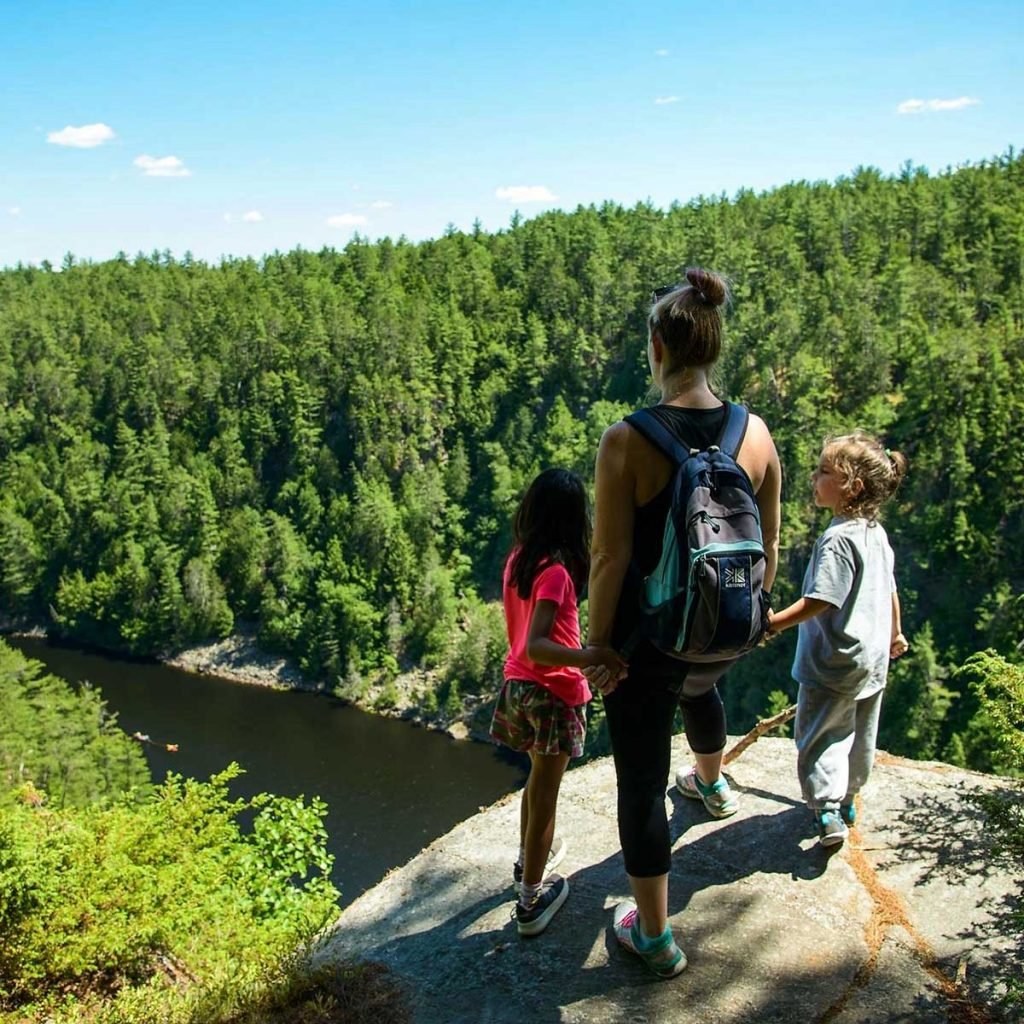Adventure Awaits! Discover The Best Hiking Trails For Kids And Start Exploring Today!
Hiking Trails for Kids: A Fun and Educational Outdoor Activity
Introduction
Dear Readers,
2 Picture Gallery: Adventure Awaits! Discover The Best Hiking Trails For Kids And Start Exploring Today!


Welcome to our article on hiking trails for kids! As parents, we understand the importance of providing our children with enriching outdoor experiences. Hiking is a fantastic way to connect with nature, learn about the environment, and foster a love for physical activity. In this article, we will explore the world of hiking trails suitable for kids, and provide you with all the information you need to plan a memorable and educational adventure for your little ones.
Table of Contents

Image Source: runwildmychild.com
1. What are hiking trails for kids?
2. Who can go hiking on these trails?
3. When is the best time to go hiking?

Image Source: familycantravel.com
4. Where can you find hiking trails for kids?
5. Why is hiking beneficial for children?
6. How to prepare for a hiking trip with kids?
7. Advantages and disadvantages of hiking trails for kids
8. Frequently Asked Questions (FAQ) about hiking trails for kids
9. Conclusion
10. Final Remarks
1. What are hiking trails for kids? 🥾
Hiking trails for kids are specially designed paths or routes in nature that cater to the needs and abilities of young hikers. These trails are typically shorter in length, have moderate difficulty levels, and feature points of interest or educational elements along the way. They provide a safe and enjoyable outdoor environment for children to explore and engage with nature.
2. Who can go hiking on these trails? 👨👩👧👦
Hiking trails for kids are suitable for children of all ages, from toddlers to teenagers. Parents, guardians, and other family members can also join in on the adventure. These trails offer a great opportunity for quality family time and bonding, as well as a chance for kids to socialize with their peers and develop teamwork skills.
2.1 Toddlers and Preschoolers
Toddlers and preschoolers can enjoy hiking trails for kids with the assistance of their parents or caregivers. It is essential to choose trails that are stroller-friendly or have wide, even paths. Parents should also ensure that their little ones are dressed appropriately, have comfortable shoes, and bring along snacks, water, and any necessary supplies.
2.2 School-Aged Children
School-aged children can hike on their own or with adult supervision, depending on their level of maturity and experience. It is crucial for parents to assess the difficulty level of the trail and ensure it matches their child’s abilities. Encourage your child to take on more challenging trails gradually, allowing them to develop their skills and confidence over time.
3. When is the best time to go hiking? ⏰
The best time to go hiking with kids is during mild weather conditions, such as spring or autumn. Avoid extreme temperatures, whether it’s scorching hot or freezing cold, as these can be uncomfortable and potentially dangerous for young hikers. Plan your hike for the morning or late afternoon to avoid peak sun exposure.
3.1 Seasonal Considerations
Each season offers unique experiences on hiking trails. In spring, kids can witness the blooming of flowers and the return of wildlife. Summer provides opportunities for swimming in natural pools or lakes along the trail. In autumn, children can enjoy the vibrant colors of falling leaves, while winter offers the chance to explore snowy landscapes on suitable trails.
4. Where can you find hiking trails for kids? 🗺️
Hiking trails for kids can be found in various locations, including national parks, nature reserves, state forests, and local parks. Research your area or destination to discover nearby trails that are suitable for children. Visitor centers, park websites, and online hiking forums are excellent resources for finding information about kid-friendly hiking trails.
4.1 Local Parks and Nature Reserves
Many local parks and nature reserves have designated trails for children. These trails are often well-maintained, marked clearly, and may have interpretive signs along the way, providing educational opportunities for young hikers.
4.2 National Parks and State Forests
National parks and state forests usually offer a range of hiking trails suitable for kids. These trails can vary in length and difficulty, so it is essential to check park maps and visitor guides for information on recommended trails for children.
5. Why is hiking beneficial for children? 🌳
Hiking provides numerous benefits for children’s physical, mental, and emotional well-being. It encourages physical activity, enhances motor skills, and promotes cardiovascular health. Additionally, hiking allows kids to connect with nature, learn about the environment, and develop a sense of stewardship towards the earth.
5.1 Physical Benefits
Hiking is an excellent form of exercise for children. It helps strengthen their muscles and bones, improves balance and coordination, and boosts overall fitness levels. Regular hiking can contribute to the prevention of childhood obesity and promote a healthy lifestyle.
5.2 Mental and Emotional Benefits
Spending time in nature has a positive impact on children’s mental and emotional well-being. Hiking can reduce stress, anxiety, and symptoms of attention deficit hyperactivity disorder (ADHD). It provides an opportunity for kids to disconnect from screens, engage their senses, and experience the calming effects of being outdoors.
6. How to prepare for a hiking trip with kids? 🎒
Proper preparation is essential to ensure a safe and enjoyable hiking trip with kids. Here are some tips to help you get ready:
6.1 Plan Your Route
Research the hiking trail beforehand and choose one that suits your child’s abilities. Consider factors such as distance, elevation, terrain, and available facilities along the trail.
6.2 Pack the Essentials
Ensure you have the necessary supplies for a successful hike. These may include water bottles, snacks, sunscreen, insect repellent, a first aid kit, a map or compass, and appropriate clothing and footwear.
6.3 Educate and Engage
Before the hike, teach your children about the trail’s flora, fauna, and any historical or educational points of interest. Encourage them to ask questions and engage with their surroundings. Consider bringing along field guides, binoculars, or magnifying glasses for closer observations.
7. Advantages and Disadvantages of Hiking Trails for Kids
7.1 Advantages of Hiking Trails for Kids
Advantage 1: Promotes physical fitness and healthy habits
Advantage 2: Encourages environmental awareness and appreciation
Advantage 3: Provides opportunities for family bonding
Advantage 4: Builds resilience, problem-solving, and teamwork skills
Advantage 5: Enhances mental well-being and reduces stress
7.2 Disadvantages of Hiking Trails for Kids
Disadvantage 1: Possible exposure to hazards, such as uneven terrain or wildlife
Disadvantage 2: Risk of dehydration or sunburn without proper precautions
Disadvantage 3: Limited accessibility for children with disabilities
Disadvantage 4: Potential for getting lost without proper navigation tools
Disadvantage 5: Insect bites or allergic reactions to plants or animals
8. Frequently Asked Questions (FAQ) about Hiking Trails for Kids
8.1 FAQ 1: How do I choose the right hiking trail for my child?
It’s essential to consider your child’s age, physical abilities, and previous hiking experience. Start with shorter and easier trails and gradually increase the difficulty level as they gain confidence and endurance.
8.2 FAQ 2: What safety precautions should I take when hiking with kids?
Always carry a first aid kit, stay hydrated, apply sunscreen, and protect against insects. Teach your child about basic trail safety, including staying on marked paths, not touching unfamiliar plants or animals, and respecting wildlife.
8.3 FAQ 3: Can I bring a stroller or carrier for my baby on a hiking trail?
Some hiking trails are stroller-friendly, while others may require a baby carrier or backpack. Research the trail beforehand and check if it is suitable for strollers or carriers. Ensure your baby is secure and comfortable throughout the hike.
8.4 FAQ 4: How can I keep my child engaged and interested during the hike?
Encourage your child to be curious and observant. Point out interesting plants, animals, or geological features along the trail. Play hiking games or bring along nature-themed activity sheets to keep them engaged and excited throughout the hike.
8.5 FAQ 5: Are there any age restrictions for hiking trails?
Most hiking trails do not have specific age restrictions. However, it is essential to assess the trail’s difficulty level and ensure it is suitable for your child’s abilities. Always prioritize safety and choose trails that match your child’s age and physical capabilities.
9. Conclusion
In conclusion, hiking trails for kids offer countless benefits, from physical fitness to environmental education. By exposing children to the wonders of nature and encouraging them to explore the great outdoors, we are fostering a love for adventure and a sense of responsibility towards our planet. So, grab your hiking gear, gather your little explorers, and embark on a memorable journey through the breathtaking trails designed especially for kids.
10. Final Remarks
Friends, we hope this article has inspired you to embark on exciting hiking adventures with your children. Remember to prioritize safety, choose trails suitable for your child’s abilities, and make the most of the learning opportunities that nature provides. Happy hiking!
This post topic: Hiking Trails

